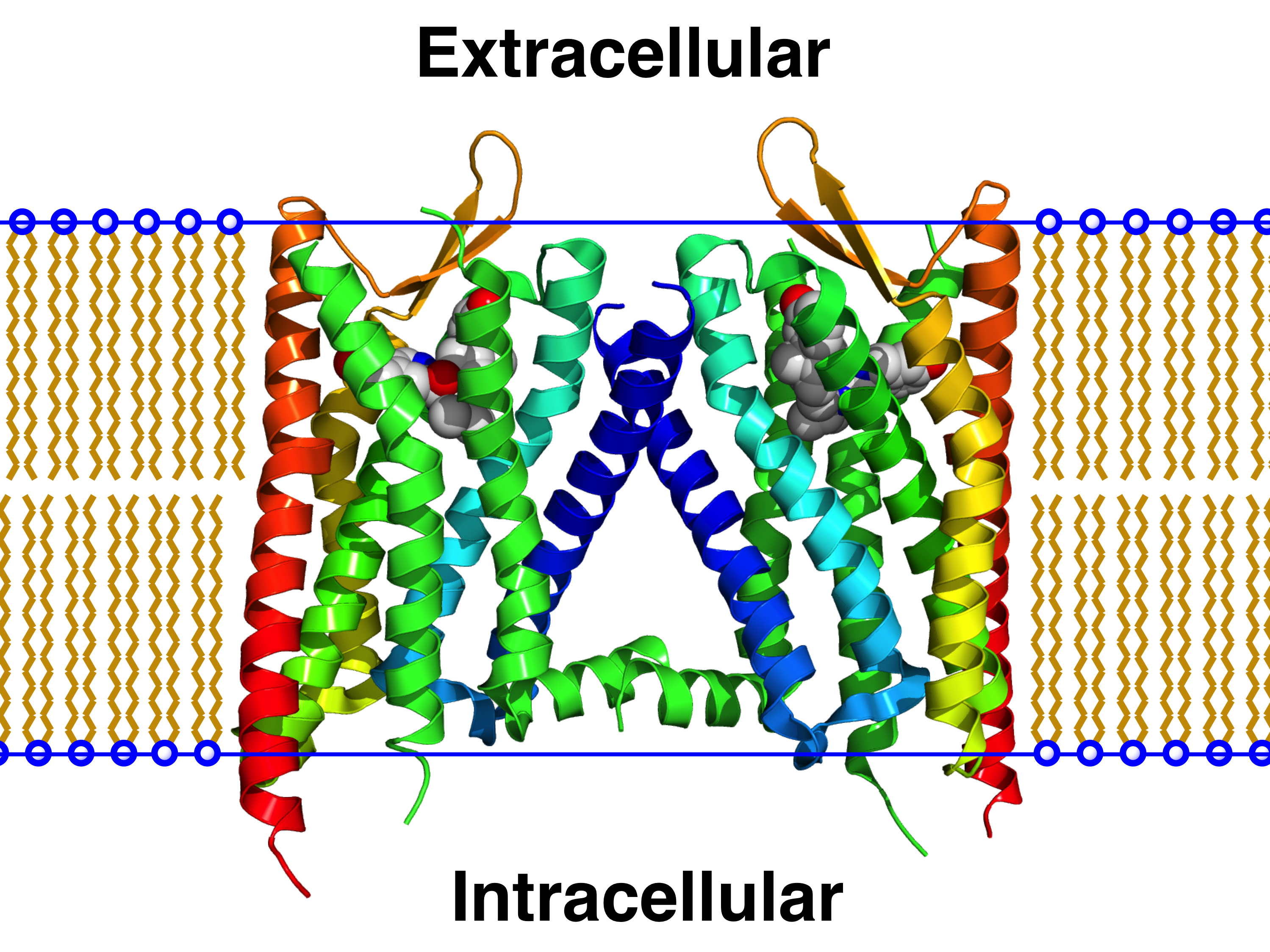
INTRODUCTION
Salvia divinorum,also know Diviner's Sage, is a perennial mint native to Oaxaca, Mexico, was discovered by Wasson and by Albert Hofmann in 1962. This herb is traditionally used in divination rituals of the Mazatec shamans to produce hallucinations and is also referred to as “ska Maria Pastora” because of their belief that the plant is the reincarnation of the Virgin Mary.This plant is traditionally used to treat a variety of conditions, including anemia, headache, rheumatism, diarrhea. Because of the intense extrasensorial experiences reported after inhalation of its smoke, S. divinorum has been gaining popularity as a ludic drug among teens and young adults , and the U.S and several other countries have regulated its use. Early studies isolated the neoclerodane diterpene salvinorin A as the principal psychoactive molecule responsible for these psychedelic effects. Since the finding that salvinorin A exerts its potent psychotropic actions through the activation of KOP receptors, there has been much interest in elucidating the mechanisms behind its effects. These effects are particularly important, because salvinorin A is the first reported non-nitrogenous opioid receptor agonist, and its effects are not mediated by the 5-HT2A receptor, the classic target of hallucinogens such as LSD and mescaline.
CHEMISTRY
Salvinorin A, also know as 9-(acetyloxy)-2-(furan-3-yl)-6a,10b-dimethyl-4,10-dioxododecahydro-2H-benzo[f]isochromene-7-carboxylate with IUPAC classification,is a trans-neoclerodane diterpenoid.It is known to be a prodrug, that means that the molecule that are inactive needs to be chemically converted in the body before it can produce it's effect on human organism,and its formula as follow:

The biosinthetic path that allow Salvinorin A to be produced by Salvia Divinorum it's different from the classical terpenoid that are produced by the mevalonic acid pathway, which is ubiquitous in plants and animals.The biosynthetic pathway of the hallucinogenic diterpenoid involves the monophosphate of 1-deoxy-D-xylulose (DOX), and that higher plants utilize both the MVA and DOX pathways(Sagewisdom). This biosynthetic route is now called the 1-deoxy-d-xylulose-5-phosphate pathway or MEP pathway, in reference to the early pentose intermediates, 1-deoxy-d-xylulose 5-phosphate and 2-C-methyl-D-erythritol 4-phosphate,and it s showed in the figure below.

NEUROPHARMACOLOGY AND PHYSIOLOGY
After asumption of Salvia Divinorum,the chemical structure of Salvinorin A has been modified in C-2 acetate by deacetylation and the final result of this chemical modification is Salvinorin B,that is the main metabolite of Salvinorin A(Hooker JM, Xu Y, Schiffer W, Shea C, Carter P, Fowler JS. (2008) Pharmacokinetics of the potent hallucinogen, salvinorin A in primates parallels the rapid onset and short duration of effects in humans
).After administration and the binding of the molecule at KOP receptors , it was found the highest concentrations in the cerebellum, notable for its role in integrating sensory perception with motor control, and the psychedelic properties of salvinorin A may occur through the striatal (visual) cortex ,and also have indirect effects on dopaminergic, noradrenergic, and endocannabinoid systems . Combined, the potential for a rapid release of dopamine (DA) within the reward circuitry of the nucleus accumbens might suggest the potential for drug reinforcement behavior with salvinorin A. Brain clearance was also quite rapid,and maximal activity in humans lasting less than 10 min.
Salvinorin A exhibits high binding affinity for KOP receptors and is devoid of activity at δ-opioid (DOP) receptors,and for this extreme binding properties it is an agonist for endogenous opioids like dynorphins, enkephalins, endorphins, endomorphins and nociceptin. The following figure depicts the structure of the KOP receptors:

The κ-opioid receptor is a homo-dimeric protein encoded by the OPRK1 gene and is one of five receptors in the brain capable of binding opium-like compounds and are responsible for mediating the effects of these compounds in many essential physiological processes including regulation of pain, respiratory drive, mood, and in the case of κ-opioid receptors (KOR), dysphoria and psychotomimesis,and the last one are widely distributed in hypothalamus, periaqueductal gray, claustrum, substantia gelatinosa, and in pain neurons.
κ-Opioid receptor activation through agonists is coupled with the G protein Gi/G0, which subsequently increases phosphodiesterase activity. Phosphodiesterases break down cAMP, producing an inhibitory effect in neurons. κ-Opioid receptors also couple with inward-rectifier potassium and to N-type calcium ion channels. Recent studies have also demonstrated that agonist stimulation of the κ-Opioid receptor, like other G-protein coupled receptors, can result in the activation of mitogen-activated protein kinases (MAPK).
It has long been understood that κ-opioid receptor agonists are dysphoric, and recent studies have shown the aversive properties in a variety of ways. the k-Opioid receptor is thus strongly believed to be an integral neurochimical molecule responsible for addiction and remission. The effects of salvinorin-A are responsible for the association of the k-Opioid agonist receptors, with dissociative and deliriant effects.
BIODISPONIBILITY
The chemical processes,able to degradate the Salvinorin A in the body, involved CYP450 isoforms that cause significant degradation of this molecule in vitro .Significant studies,like this Kutrzeba L, Dayan FE, Howell J, Feng J, Giner JL, Zjawiony JK.Biosynthesis of salvinorin A proceeds via the deoxyxylulose phosphate pathway., identified four CYP of this family that produce degradation of salvinorin A at 50 μM: CYP2D6, CYP1A1, CYP2C18, and CYP2E1. Furthermore, CYP450-mediated degradation follows Michaelis-Menten kinetics because these isoforms produced a higher degree of degradation at 5 μM. CYP450 isoforms are also involved in the decrease of salvinorin A of 7% (±5.60) at 50 μM when incubated with UGT2B7, the major enzyme involved in glucuronidation of most drugs.From the study of Coffman B, Rios G, King C, Tephly T (1 January 1997)., it's possible to say that UGT2B7 is a metabolism isoenzyme active in the liver, kidneys, epithelial cells of the lower gastrointestinal tract and also has been reported in the brain.This isoenzyme serve a major role in the elimination of potentially toxic xenobiotics and endogenous compounds catalysing the conjugation of lipophilics aglycon substrates with glucuronic acid, using UDP glucuronic acid.
After smoking Salvia extract, salvinorin A measured in 1.5 hour urine is 2.4 and 10.9ng/mL in two subjects respectively, but not 9 hour urine, and positive in saliva one hour following smoking with the following results: 11.1 and 25ng/mL, respectively, but not in sweat patches removed two hours after smoking. Intravenous pharmacokinetics were studied in non-human primates (Schmidt et al, 2005ii), and the elimination half life was found to be highly variable at 56.6 + 24.8 min for the four subjects, attributed to the rapid distribution phase.The following figure depict the metabolic degradation of Salvinorin A in rat plasma:

EFFECTS
Psychedelic experiences are subjective and variations in reported effects are to be expected.The common effects in a great percentual of people are: uncontrollable laughter,
vision of past life,like childhood experience,sensation of being pulled by unknown forces,vision of various two-dimensional surfaces,the sensation to became an object,and
overlapping realities, like perception of being in different locations at once.
Psychological side effects of Salvia Divinorum include anxiety, irritability,dizziness, drowsiness, sleeping difficulty, mood effects, lightheadedness, racing thoughts, increased self-confidence, increased or decreased concentration.People that have Borderline Personality Disorder might become more unstable when use Salvia.
A potential danger of Salvia Divinorum is long-term brain damage, especially when pure Salvinorin is been used because can cause brain damage called Olney's Lesions when taken in at high doses.
Salvia may cause decreased heart rate, increased perspiration, changes in body temperature, inability to maintain balance, loss of coordination, chills, inability to control muscles and short-term effects on motor-control.
CLINICAL USE
Although it is too early to draw definitive conclusions regarding the antidepressant potential of Salvia divinorum,but initial results are promisin , with the majority of patients reporting lasting benefits from their use of this herb(Daniela Braida,1 Valeria Capurro,1 Alessia Zani,1 Tiziana Rubino,2 Daniela Viganò,2 Daniela Parolaro,2,3 and Mariaelvina Sala1,3.Potential anxiolytic- and antidepressant-like effects of salvinorin A, the main active ingredient of Salvia divinorum, in rodents). In addition to significantly reduced scores on quantitative measures of depression, some of the reported benefits of the herb include mood enhancement and increased feelings of relaxation and self-awareness. Salvinorin A is capable of inhibiting excess intestinal motility activating effects.Salvinorin A has an pharmacological important aspect:it reduces the contraction on gut tissue,but this compound is only pharmacologically active on inflamed and not normal tissue, thus reducing possible side-effects.